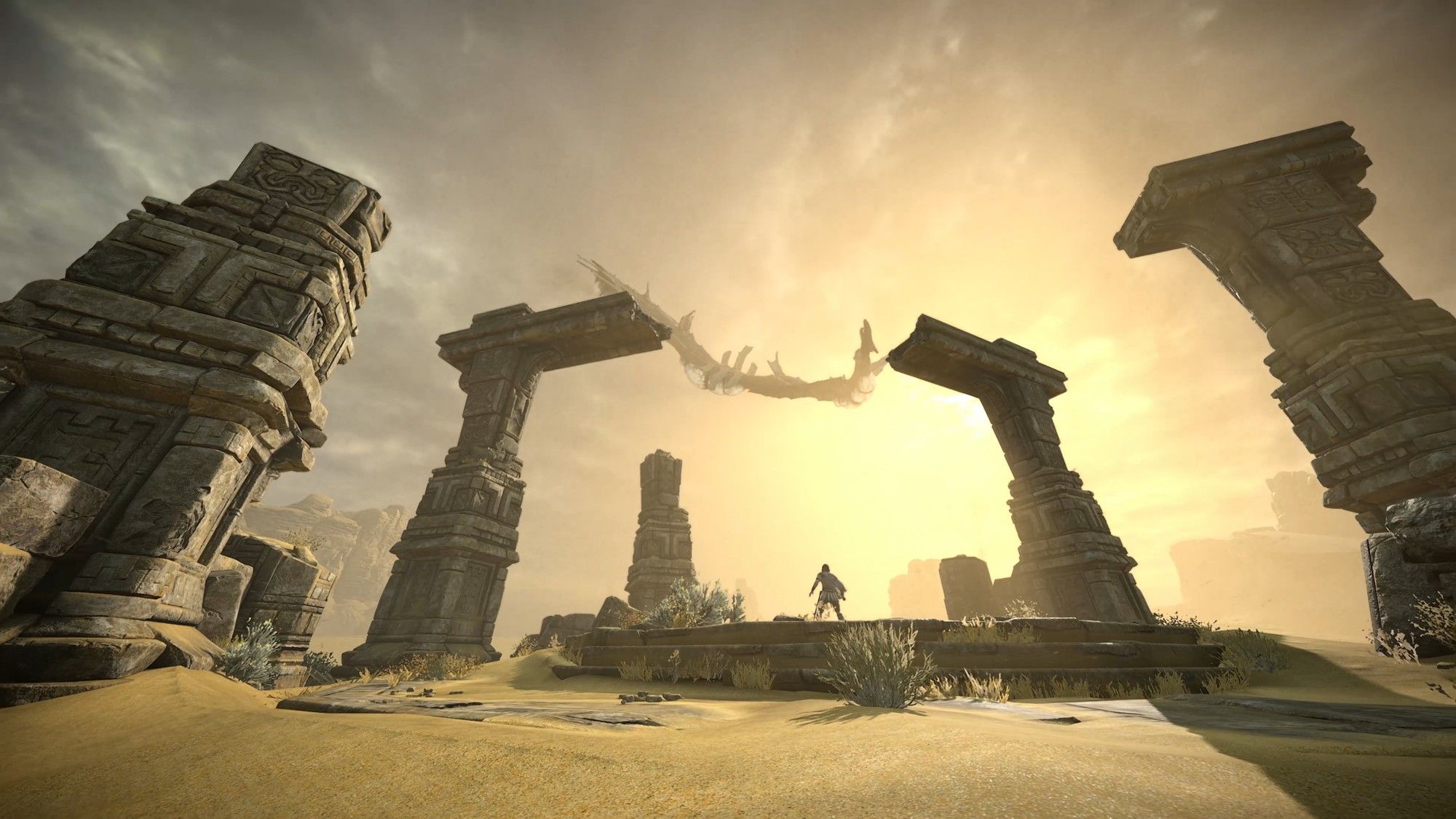Shadow of the Colossus and the Meditative Gameplay Loop
More games are making silence and contemplation fundamental to the design

For as long as I can remember, I’ve been using game worlds as a place to spend some time in my own head. In some way or another, games have been enabling this ever since 3D graphics greatly increased the immersion factor at the turn of the century. There is something immensely therapeutic about finding a quiet stretch of beach in GTA, or listening to the eerie silence of an empty Halo multiplayer map.
The ability to create a world away from the world is an extremely underrated aspect of video games, and while it’s entertaining to find a peaceful area in the middle of a CoD battleground, it’s rarely encouraged by gameplay loops. One of the main reasons Fumito Ueda’s Shadow of the Colossus stands out as an iconic moment in gaming history is that it has very little respect for the concept of a standard gameplay loop. On paper, to a gamer, it doesn’t sound like anything worth your time. I can remember rejecting the game myself when a friend game me the elevator pitch back in the mid-2000’s — 16 boss battles, no other enemies, and a huge world with nothing to do except ride your horse from boss to boss? Yeah, okay, imaginary friend, that sounds great and all but where are the other enemies. Where are the collectibles?

So, yeah, maybe it’s not got a whole lot in the gameplay department. And although you can play the game by just whizzing from colossus to colossus, satisfying that gameplay loop(and the game does reward this with new armour, weapons and equipment if the player kills each colossi fast enough) you just wouldn’t be experiencing the game for all it has if you did. What could be a four hour boss rush is far more enjoyable as an endless wander through the ancient, ruinous land of a cursed god. As clichéd as it sounds, it’s a game that’s intended to be experienced as an immersive art piece, and gaming just happens to be the best medium for Ueda to express what he needs to express.
The real gameplay loop is that long stretch of horse riding between colossi, that “downtime” which lets you explore the desolate silent world, and stop to wonder at enigmatic structures whose purposes have been long lost to time. The colossi are an excellent addition to the gameplay, but they don’t complement the deeply melancholic story of Shadow of the Colossus like the horseriding does.
This was a fantastically novel idea on a PS2 in 2005 but seems far more relevant today. I shouldn’t have to explain how the advances in audio and graphics have greatly expanded the possibilities for immersion in video games. The rise of photo mode was the industry’s acknowledgement of this and, thankfully, someone out there noticed that Shadow of the Colossus was made for this level of immersion — cue Bluepoint’s beautiful PS4 2018 remake.

More than ever, gamers are being encouraged to stop, breathe in the landscape, and maybe spend a minute or two finding that perfect angle (or filter) to really capture how the light bounces off the seascapes below. And that’s not just in Shadow of the Colossus. If you’re the sort of person who would be reading this article, I’m sure you can think of a few games with breathtaking photo modes. Hell, even Super Mario Odyssey has one.
I absolutely adore games that encourage this, and I’ve spent many hours on games of all genres, from the likes of No Man’s Sky, to Yakuza Kiwami 2, to Assassin’s Creed Origins, but one game in particular stands out in my mind as the true successor to what Shadow of the Colossus was trying to do all those years ago: Death Stranding.

Even just on the surface, the comparison seems obvious. The deep green valleys, the perilous rock faces, the long stretches of quiet roads. But there’s more to it than that because, for as nice as a photo mode is, it’s always going to be an auxiliary feature. It’s just something to tag on for the amateur photographers who happen to also enjoy Assassin’s Creed.
Death Stranding does something different, because it bakes these meditative moments into the gameplay. Spending ten or fifteen minutes with just yourself and the empty wastes is an intended part of the experience. The game mechanics are built into walking itself. The player character can overbalance, slip or trip on the wrong rock. Equippable items often exist purely to aid this exploration — ladders, ropes and bridges eventually dot your landscape. The most ingenious decision of all is to have the world be connected via multiplayer. Players can point each other to vistas, build well-trodden pathways by walking the same routes, or help each other build bridges. In Death Stranding, the walking is the gameplay loop, and this is so important because it connects the player with the painstakingly natural landscape with such a deep level of immersion that could only be beaten by physically walking the landscapes that inspired it.

This is a new genre which is aching to be explored, with all the power and graphical realism at our hands. Make the immersion itself the gameplay loop. Encourage the players to just exist in your world. Tell a story through the landscape, through the gameplay of uncovering that landscape. Fumito Ueda understood it and created it before gaming was even ready, Hideo Kojima recognised when the gaming world was ready for it. Thankfully, it looks like he was right too, at least financially. I can’t wait to see where we go next with the outstanding detail we can virtualise in fantasy worlds. And I’ll love every second of it, even if it means simulating tripping over a branch and smacking your face on a jagged rock.
Yeah, my Norman Reedus was a clumsy boy.
